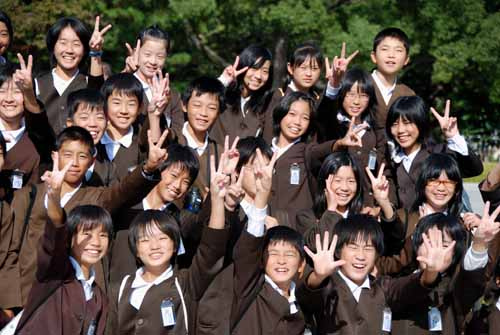Will Japan Seize a Demographic Opportunity?

Please note that we are not authorised to provide any investment advice. The content on this page is for information purposes only.
Japan is ageing; shrinking population will cause serious problems for the country throughout the 21st century. Although the fertility rate has recovered to 1.39, this is still very low by international standards. Current official projections estimate that Japan’s present population of 120 million will decline to 40 million by 2110. In addition, the proportion of elderly (65 years and older) — now 25 percent of the population — is expected to rise to 40 percent by 2060.
But Japan’s ageing population is not just a challenge. It is also an opportunity.
Japan is ageing; shrinking population will cause serious problems for the country throughout the 21st century. Although the fertility rate has recovered to 1.39, this is still very low by international standards. Current official projections estimate that Japan’s present population of 120 million will decline to 40 million by 2110. In addition, the proportion of elderly (65 years and older) — now 25 percent of the population — is expected to rise to 40 percent by 2060.
But Japan’s ageing population is not just a challenge. It is also an opportunity.
Let’s start with the challenge. Despite efforts to cut Japan’s public deficits, they continue to rise due to the significant cost associated with sustaining the social security system. The debt-to-GDP ratio is now roughly 200 percent. In contrast, the Maastricht criterion requires EU member countries to have a debt-to-GDP ratio lower than 60 percent. The Koizumi administration, however, slashed public investment during the 2000s, and it has now fallen to less than half its peak level.
Social security related expenditures are steadily rising. Each year, more than a million people start receiving the public pension and so the government must put more money into that system. The medical cost per person for the aged is five times as high as that for the working population. Again, the government must put more money into medical insurance, placing serious stress on public deficits. To mitigate this problem, Japan raised its value-added tax rate from 5 percent to 8 percent in April this year and it will rise 10 percent next year.
Another challenge caused by demographic changes is regional. Many small towns and cities will likely be unable to overcome the rapid ageing and shrinking of their populations and will simply ‘vanish’.
Japan’s declining and rapidly ageing population is also a major source of widespread pessimism about the future of the Japanese economy. Pessimism has taken hold of both the supply side and the demand side of the economy. It is widely believed that as the working population (labour supply) shrinks, so does the economy. Although this argument is appealing for its simplicity, simply the number of workers alone does not determine the economy.
Japan’s past record proves this. The Japanese economy grew at 10 percent per year in real terms during the 1950s and 60s, its rapid growth era. But the average growth rate of the working population during the same period was a mere 1 percent per year. The difference between the two, namely 9 percentage points, is nothing but an annual increase of labour productivity. It came from the higher endowment of capital per worker — the bulldozer instead of the shovel — and innovations. Though a declining population is a negative factor for economic growth, its impact is not quantitatively decisive because growth in an advanced economy is mainly growth of income per person.
What about the demand side?
Many Japanese business people complain about the shrinking domestic market. Therefore, Japanese firms are looking to the growing markets of China, India and beyond. But should they give up on Japan’s ‘shrinking’ domestic market?
If you produce and sell the same product, then your sales may depend tightly on the number of potential buyers, or population. But usually, new goods and services command higher value added. That is why an advanced economy grows. In short, population does not mechanically determine the size of the market.
History tells us that major new goods and services appear first in the markets of advanced countries rather than in developing countries. This is exactly why we can be optimistic about the future of the Japanese economy. Ageing, which is not unique to Japan but a global problem, requires widespread changes — ranging from automobiles, medical services, distribution systems and public attitudes to buildings and cities. Ageing is, therefore, a major seed of unbounded innovations.
In this respect, Japan’s domestic market has advantages. First, the level of incomes is high enough so that the market can accommodate expensive new goods and services. Second, the size of the market is, crucially, big enough. Luxembourg and Norway, though their income levels are high, may be disadvantaged by their small markets. Third, Japan remains highly competitive in basic sciences and technologies.
Rapid ageing itself is an advantage; necessity is the mother of invention!
Declining population and rapid ageing are no doubt the big challenges facing Japan in this century. The problems are well recognised even if the solutions are yet to be discovered. Widespread pessimism for the future of the Japanese economy, however, is overstated. Ageing is not only a challenge but also a great opportunity for Japanese firms. They must not forget the importance of the domestic market for innovation.
Japan’s demographic challenges are also an opportunity is republished with permission from East Asia Forum




